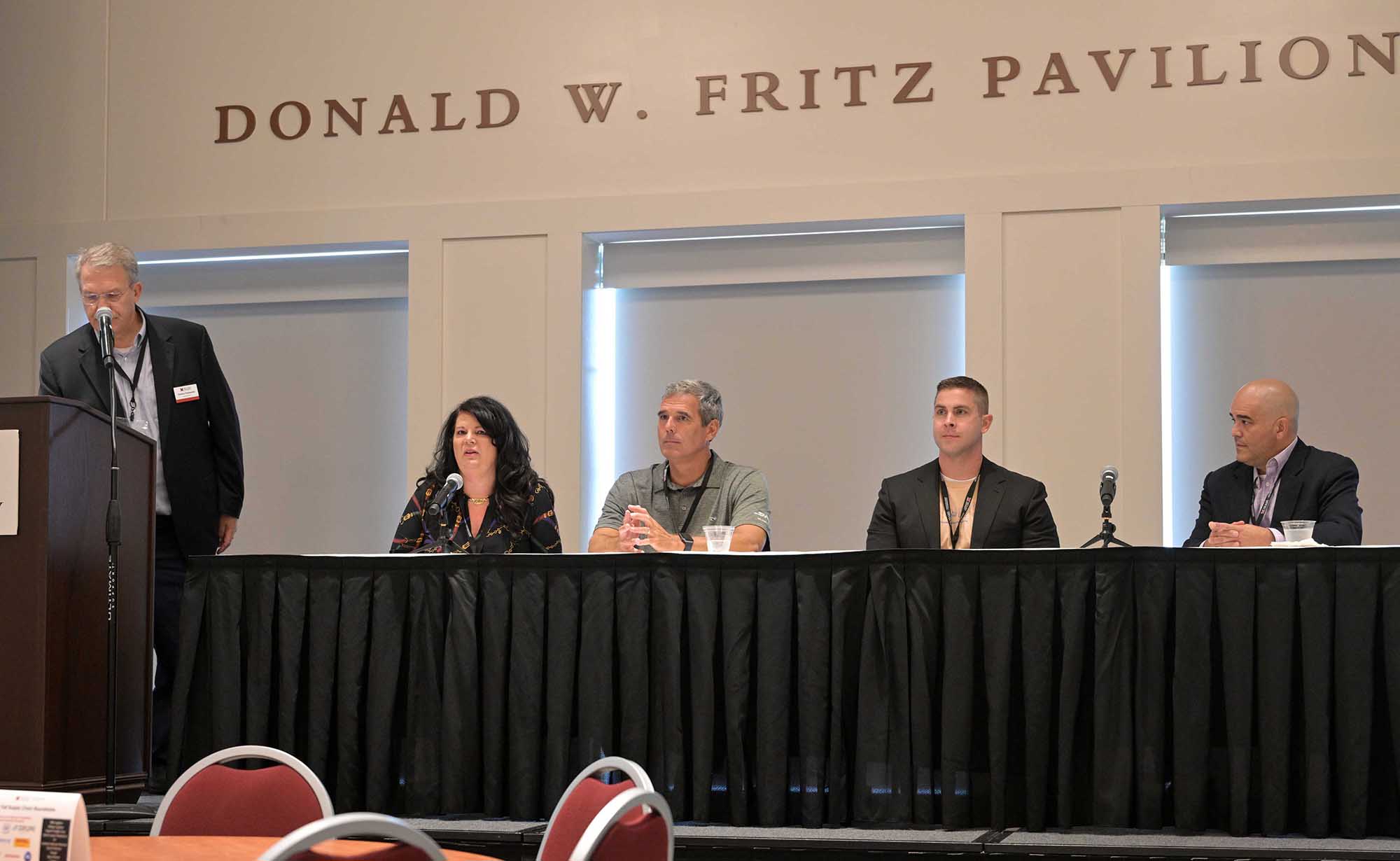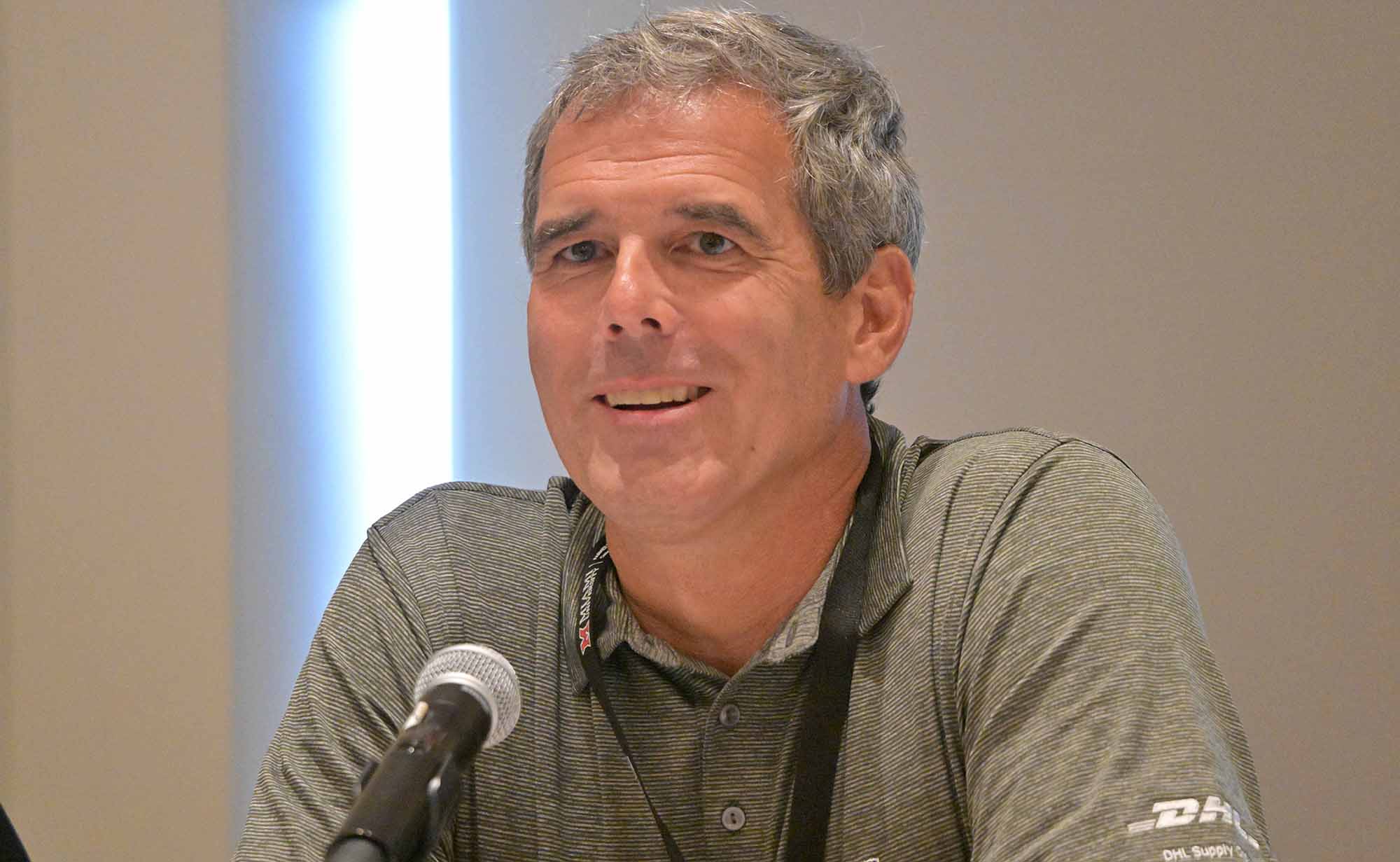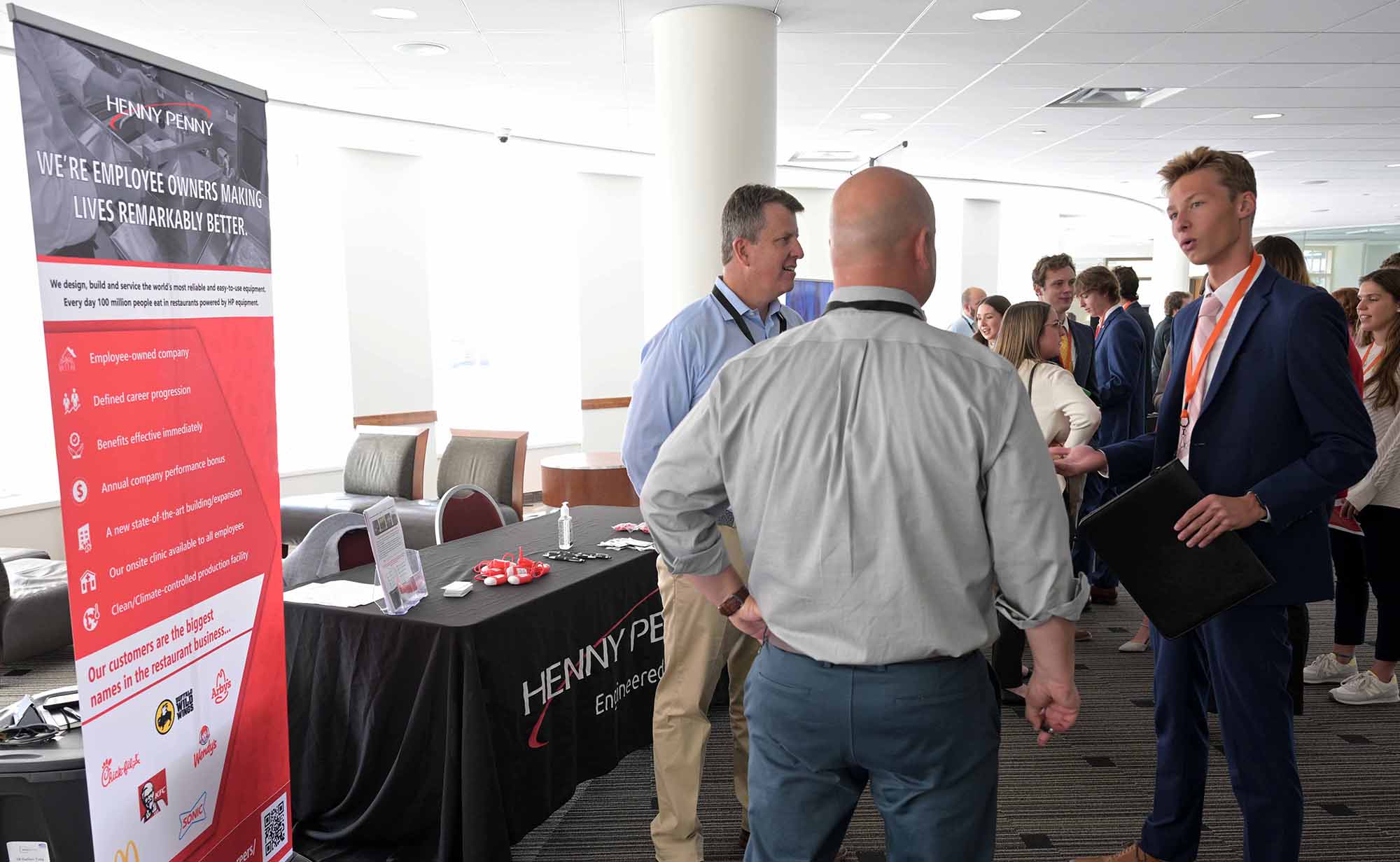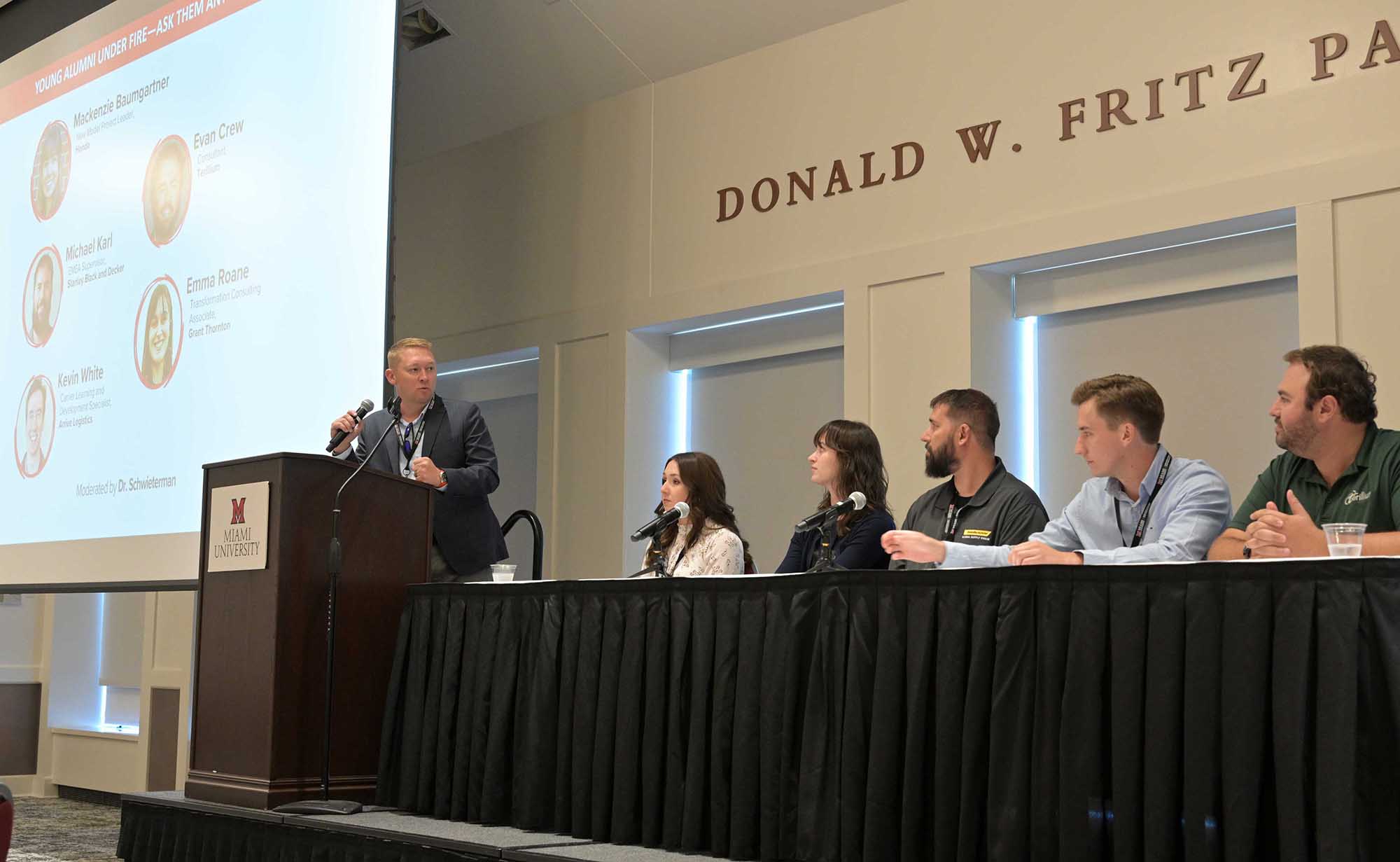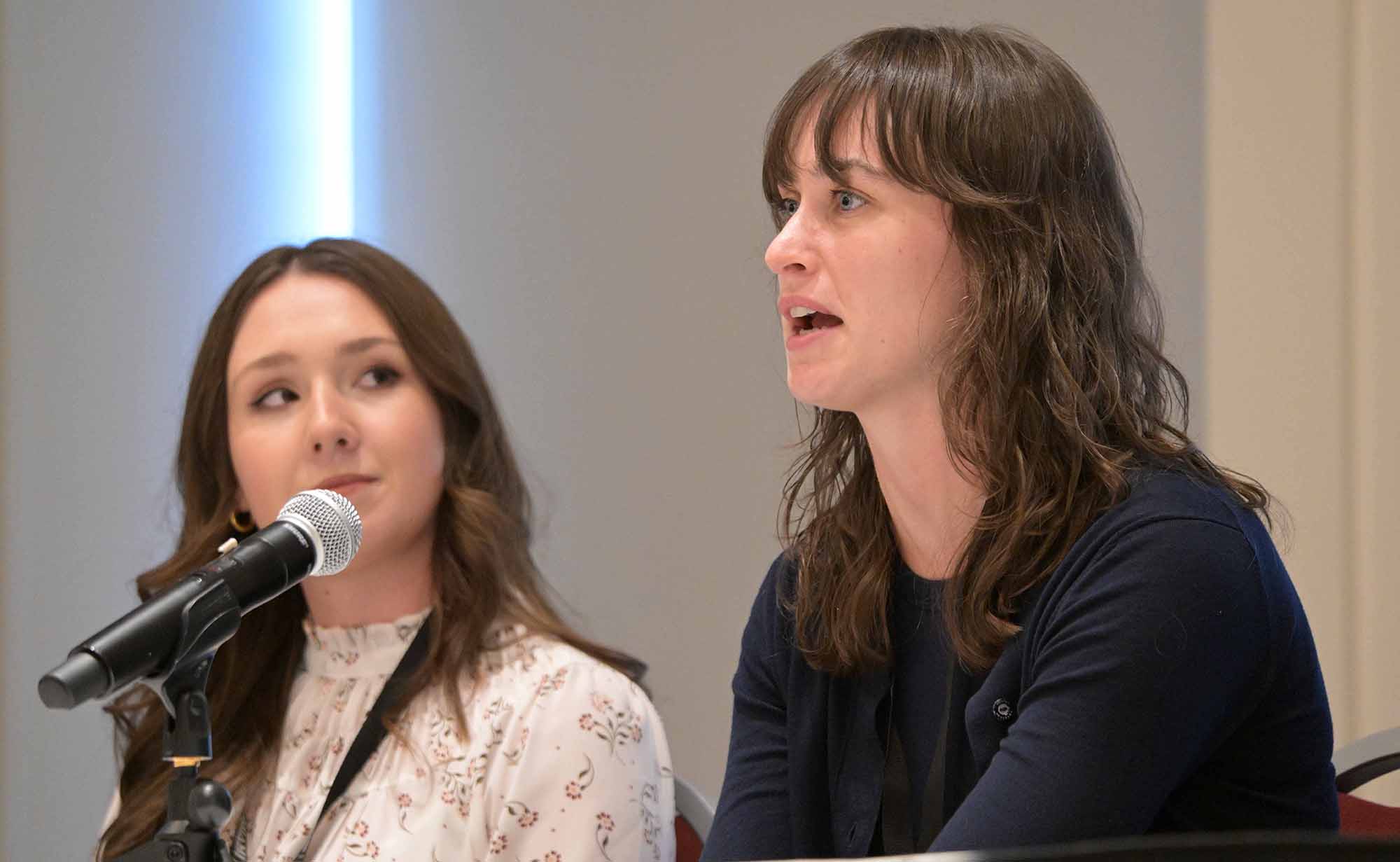Center for Supply Chain Excellence Roundtable brings students, alumni, recruiters together
It was the third year for the Roundtable, and the biggest so far.
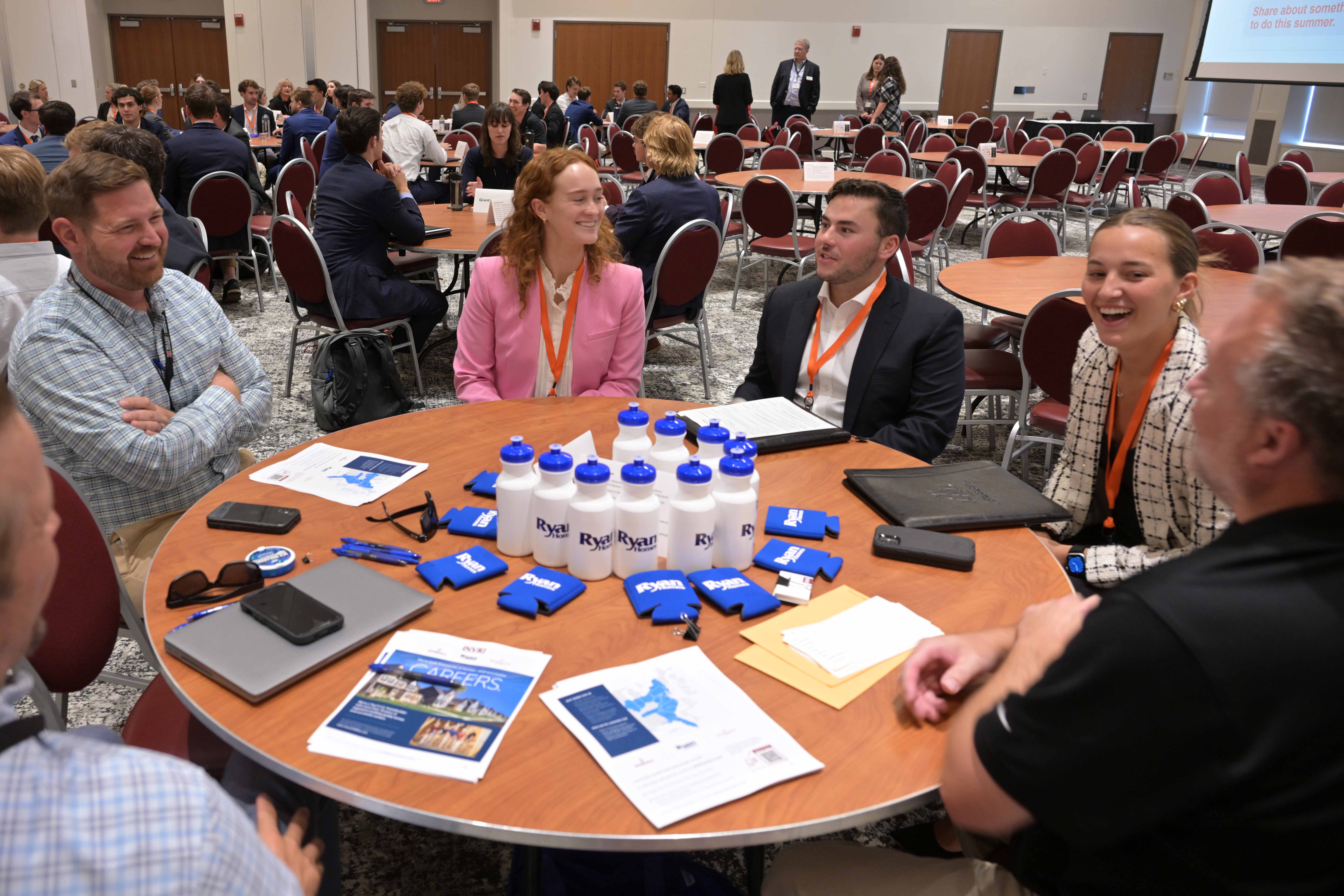
Center for Supply Chain Excellence Roundtable brings students, alumni, recruiters together
It was a record turnout for the Center for Supply Chain Excellence Roundtable event at the Armstrong Student Center, months after a record size graduating class of supply chain operations and management students at the Farmer School of Business.
“We had 163 students registered, along with 61 professionals from 23 different companies. Many alumni come back for this event, and in its third year, it has become our biggest event we do each year,” CSCE director Monique Murfield said.
Created in 2020, the center supports student programs, faculty research, and curriculum development for the Farmer School’s supply chain and operations management program.
“The Roundtable is really impactful for our students. It is designed like a mini-conference, so there are educational elements for all participants, including 2 panels, along with plenty of networking time,” Murfield said. “It's also really helpful for companies to have the majority of our supply chain & operations students in one place at one event, and is a very popular event for recruiting supply chain talent for both internships and full-time openings.”
The first panel discussion involved several questions and answers from four supply chain executives:
- Seth Harms, Director, Supply Network Operations Global Innovation Surface Care, Procter & Gamble
- Dennis Lutwen, President, Consumer North America, DHL Supply Chain
- Ricky Piedrahita, Vice President Direct Sourcing, The Kroger Company
- Karla Tankersley, Lead Director of Business Solutions, Ralph Lauren
On innovation and transformation of the supply chain:
“If I can get one extra day of fresh food out of that product, I reduce waste, I have a better experience for my customers, I actually save money in the process. So we've been working with the vendor community to determine how we can integrate and innovate with the produce containers that allow more airflow to come in through to the fruit, to keep it fresher, to keep it better at temperature.” Piedrahita said.
“We've now strategically situated ourselves where we are about one day away from 80% to 90% of our customer volume -- a huge enabler as far as just responding to customers,” Harms said. “We've partnered with some of our larger suppliers so they have facilities right next to where we have manufacturing plants. I have personally seen bottles produced about an hour or two previously and then get delivered directly to a production line using an autonomous vehicle.”
“It is incredibly important for us to continue to look for opportunities to create a better work environment for them so they're not walking all over a warehouse or driving all over a warehouse, et cetera, and to create a different experience,” Lutwen said. “Last week I was at a warehouse where, before we innovated with some robots and changes, our associates were walking five to seven miles a day, but after we were able to implement the innovation, they were walking between three quarters of a mile and a mile a day. So you can see what that would do for retention of associates and job quality. And that's very, very important to us.”
“I would say within the past five years, especially, it's about data. We need to know where a customer's order actually is and the supply chain. Where is our product? Is it on a boat? Is it in a consolidation location or is it in a distribution center? And within these centers that are a million square feet, we need to know exactly where that product is, how much of it that we have,” Tankersley said. “We're going through a transformational journey of our automation and of our data, so RFID tags, and how we can be able to accurately know where that $35,000 watch is within a million-square foot facility.”
On the importance of analytics in supply chain:
“One area is predictive turnover. Obviously in our industry there is, unfortunately, a turnover rate that does exist because there are a lot of different hourly warehouse roles available in our centers that we operate in. We continue to reduce that percentage, but it's important for us to know when is that turnover going to take place in a common year? Is there a period at that specific warehouse where it takes place? Is it a period of the year, is it a month, is it a week? Could it be based on overtime that we're working?” Lutwin said. “So we're using analytics now to develop a model that allows us to have a bit more foresight into when we think that turnover will take place.”
“We have a lot of orders that are just one unit. How can we process those in a different way? By breaking down orders into segments, using the data and analytics that we had, we could see the seasonality. We could see that things are very different in the summer versus in the winter. We could see all these different profiles of orders and what could it mean,” Tankersley said. “And then we go back to our automation, we go back to our systems and say, ‘OK, what's the playbook and how can we use this in a different way?’ So it's really given us an opportunity to meet the customer with what they're looking for and deliver upon speed. And from a pure efficiency play, it's a great opportunity for us to process single orders differently than we would multiple orders.”
“We've been using analytics, AI, and other tools to help us identify new materials or ways of getting alternate materials. That helps us with our agility in some of our products, or at least where we can be flexible and agile,” Harms said. “Having alternate formulas to make some of our products just helps us in responsiveness and overall agility.”
“There's more data than you know what to do with right by itself. Tell me what the insight is you're generating from that data and from that insight, tell me the strategy you're going to use to fix a problem, what action you're going to take,” Piedrahita said. “I always say data leads to insight, insight leads to strategy, strategy leads to action. You’ve got to go take it all the way through. If I leave you with anything else, make sure you're thinking it that way. Data doesn't do anything by itself. You’ve got to do something with it.”
The other panel at the Roundtable featured five recent Farmer School supply chain alumni answering questions put forward by students:
- Mackenzie Baumgartner, New Model Project Leader, Honda
- Evan Crew, Staff Consultant, Terillium
- Michael Karl, EMEA Supervisor, Stanley Black and Decker
- Emma Roane, Transformation Consulting Associate, Grant Thornton
- Kevin White, Carrier Learning and Development Specialist, Arrive Logistics
On expanding professional networks:
“If there's a place that you're interested in working, grow your network through your Miami alumni, reach out to them on LinkedIn, especially when they come here or if they might be doing maybe just a table event at Farmer, taking time to speak to them,” Roane said. “I think that was something that really helped even in some of my class projects. I was able to expand my network, gain some insight into the companies that I was doing some of my projects on by reaching out to the alumni that were working at that company.”
“As much as the students are networking with us, we're also networking with you, and we're also networking with the other companies here as well. We're all passionate to be here and want to help grow connections both for future co-ops and internships, but also just in other industries to learn more,” Baumgartner said. “Evan and I have actually been on a panel before and it was cool to come back and be like, ‘Oh hey, good to see you, haven't seen you in a few months.’ So it's kind of a cool thing when you start getting involved in other things outside of your company and you're able to represent your company but also represent Miami at opportunities like this.”
On the most useful things learned while at Miami:
“All these client-based projects, those are things similar to what you're going to be doing in the real world once you get your jobs after college. So really honing in and taking those client-based projects seriously, whether it’s the FYIC project or senior year working directly with corporations, taking advantage of every opportunity you get,” Karl said.
“I think one of the best things was the capstone project. You had to find a problem and create the solution from, start to finish, from resources and materials they were going use,” White said. “The good thing with that is you use all your knowledge throughout the classes that you've taken to get to that point and that you have to network with people. Because let's face it, not everybody knows everything. So coming together as a team to do that, you get the diversity of everybody to get the different perspective perspectives on everything.”
On the biggest challenges after college:
“I don't think enough emphasis is put on the transition out of college into living your regular life, outside of your professional life. I think that was a big obstacle, adjusting to that kind of lifestyle.” Crew said. “Comparing college and the real world, it's a lot different.”
“The first big promotion or the first big career change after you start the full-time job. You might be a year in before that happens, you might be three years in before that happens, but when it does happen, it feels like you're starting all over again,” Baumgartner said. “It feels like you're at square one and you don't know anything. It's all about forcing yourself to continually be learning and adjusting and understanding that change and that promotion, or that even lateral move, is going to help you and it's going to help develop your career.”
Before and after the panels, students met with supply chain recruiters and executives one-on-one and in small groups. “My favorite part is helping students make connections, talking to them about what they're looking for, and then personally walking them over to introduce them to someone, or telling them what companies to go check out,” Murfield said.
